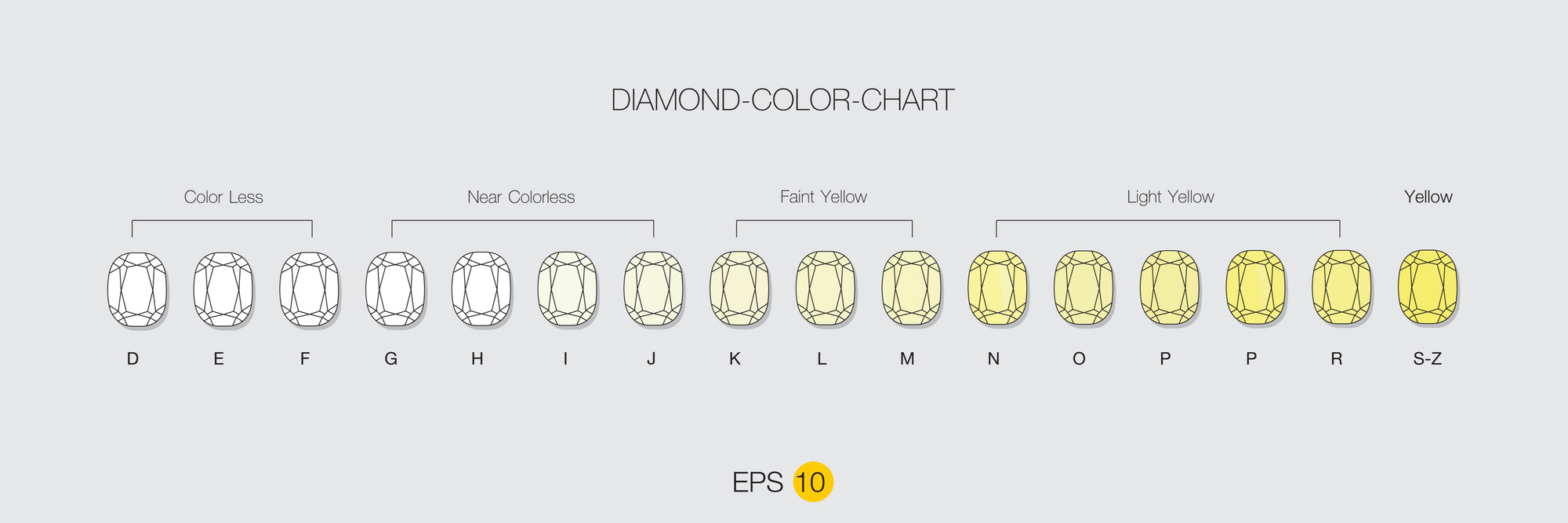A diamond's value and quality is determined with the help of the 4 C's. Namely, Carat, Cut, Colour and Clarity.
It is highly important to associate with these factors and learn a bit about them before buying a diamond. Our in store team is always ready to offer you the information required in order for you to make an informed decision. The end goal is not buying a diamond from us, but buying the right diamond for you.
Here we will offer a brief explanation into Clarity and how it affects a diamond.
Every natural diamond has its own unique clarity characteristics. But what does that even mean? It means that each diamond is unique and can be separated from another by these characteristics.
The characteristics are separated into blemishes and inclusions. These can be thought of as marks either on the surface of a diamond (blemishes) or enclosed within a diamond (inclusions).
The GIA (Gemmological Institute of America) has developed various clarity grades which diamonds fall into. The grades begin with F being a flawless diamond and go down to I, which is an Included diamond. Below you can see the GIA clarity Scale.

As you can see above, there are 10 clarity grades. The first one, where the diamond is flawless simply means that the diamond in hand has no blemishes or inclusions. The second grade IF means that the diamond only has blemishes and no inclusions. Remember blemishes are confined to the surface of a diamond and do not affect the clarity grade after IF. An example of a blemish can be a scratch caused during the diamonds polishing faze.
Next we have the VVS 1 and 2. The very very small inclusion category. Here the diamond has an inclusion trapped within it, which can be seen using a 10X loupe. It must be noted that the inclusion is minute and very hard to identify. It is usually located at the sides of the diamond and not at the table (centre).
Following we have the VS 1 and 2 category. Meaning very small inclusion. Here the inclusions may be more than one, they will be more visible and could be closer to the diamonds table (centre).
SI 1 and 2 the category where most diamonds find themselves in. The small inclusion category is where the inclusions can be easily spotted with a loupe 10X and will be bigger in size, plenty in number and their location will be on the sides and centre of the diamond.
Finally the I 1, 2 and 3 category is the included category. These diamonds have many inclusions which sometimes can be visible with the naked eye. Diamonds in this category will shine less as light will not be able to reflect as well through the diamonds facets. The inclusions take over the diamond in this category affecting its brightness in many ways.
Here are a few diamond plots showing some clarity grades. The red spots indicate the various inclusions. Each shape relates to a different inclusion.
An example of an inclusion is a crystal. This is when another mineral has been enclosed within a diamond. In rare cases a gem such as a ruby can be trapped within a diamond. This is a rare incident and very unique. There are many other inclusions that we will be happy to explain to you in one of our stores.
When looking at a diamond's clarity grade one must pay attention to the the following 5 matters in terms of inclusions. Their Size, Number, Location, Nature and Relief.
Size, number and location are exactly what they mean. The Nature of an inclusion relates to what that inclusion is. For example a crystal (mentioned above) affects the clarity grade less than a feather (a break within the diamond) when keeping all other things constant. So it is important to know what kind of inclusions the diamond you are buying carries. Finally Relief is the contrast the inclusion has with rest of the diamond. Taking the crystal as an example, if the crystal is white it blends better with the diamond. However, if the crystal is black, it will have a greater effect on the diamond's overall look and so affects the clarity grade more.
When selecting a diamond it is important to know its clarity grade and characteristics. Get familiar with our diamonds in our Solitaires Collection and click on the diamonds certificates in order to get a sense of the clarity grades.
It is our pleasure to help you though the process of selecting a diamond. Begin by visiting one of our stores and allowing our team to give you some information. If you are looking to go a step further please do book an appointment with our in house Diamontologist who will help find the right diamond for you.
You may book your appointment by emailing us at
anatolanswers@gmail.com
A diamond is for life, we want to make sure you make the right choice.
Sources and Material
What is the difference between VS and SI Diamond Clarity (petragems.com)
Diamond Clarity Scale Chart - The Ultimate Guide (briangavindiamonds.com)



